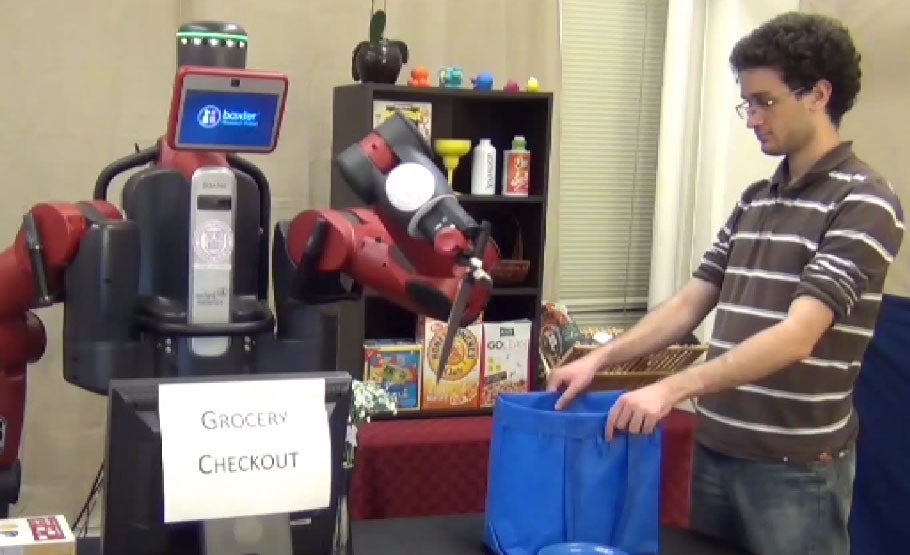Algorithm teaches robots that knifes and humans don't mix
"Corrective feedback" lets humans teach robots how to handle a range of everyday objects correctly, from sharp ones like knives to fragile ones like eggs

The next step in the ‘robot economy’ will see computerised labour step out from behind the computer screen (where it currently handles essentially clerical duties) and step forward to the front line of work: interacting with humans.
Although highly mobile robots already work in production lines and warehouses, they’re mainly kept far away from us. These are beasts of burden that don’t know their own strength, and they’re particularly unfamiliar with that strain of human frailty involving blood and broken bones. Teaching robots how to play nice then, is important.
In the video below, engineers from Cornell University use corrective feedback to teach a robot working in a mock supermarket checkout line that humans and knives are a particularly bad mix.
When the robot brings the knife a little too close for comfort to the customer they readjust its arm, eventually turning the knife so points away from the human. The robot now knows that when carrying objects that look like this to keep it tucked in close and not wave it around near humans.
This sort of feedback is important for a wide-range of objects, and although the robot in the demonstration wouldn’t have to keep a box of eggs away from humans, it would have to learn to treat this object differently from a tin of soup.
As the research paper from Ashesh Jain, Thorsten Joachims, and Ashutosh Saxena notes: “These preferences are often hard to describe and anticipate without knowing where and how the robot is deployed.”
The particulars of the algorithm demonstrated also means that the robot can learn general rules even from particularly vague feedback – it doesn’t just follow blindly what the user suggests.
Subscribe to Independent Premium to bookmark this article
Want to bookmark your favourite articles and stories to read or reference later? Start your Independent Premium subscription today.

Join our commenting forum
Join thought-provoking conversations, follow other Independent readers and see their replies